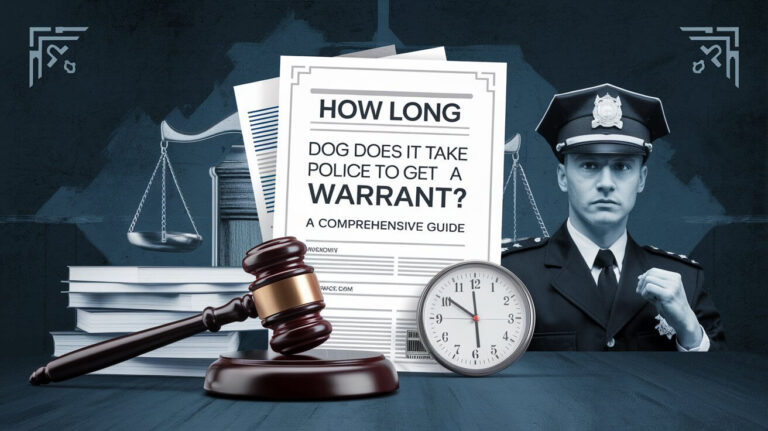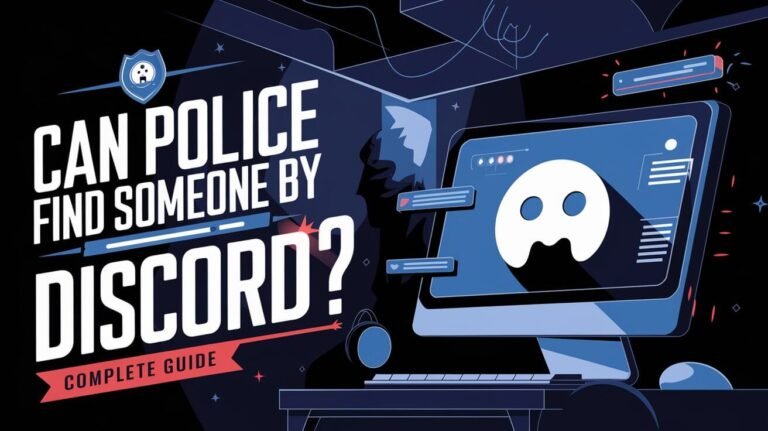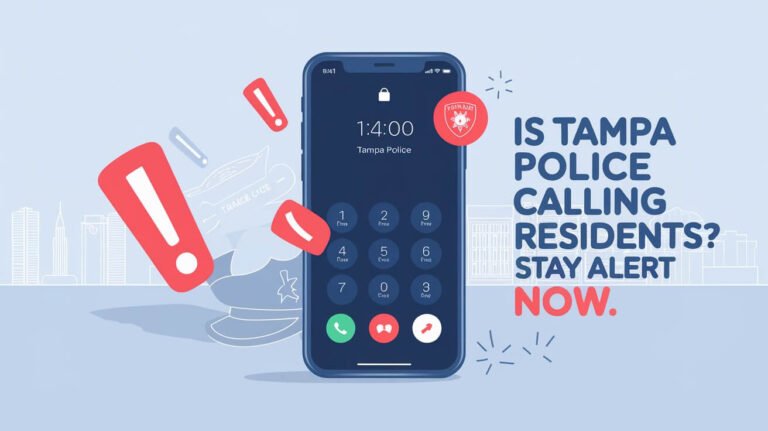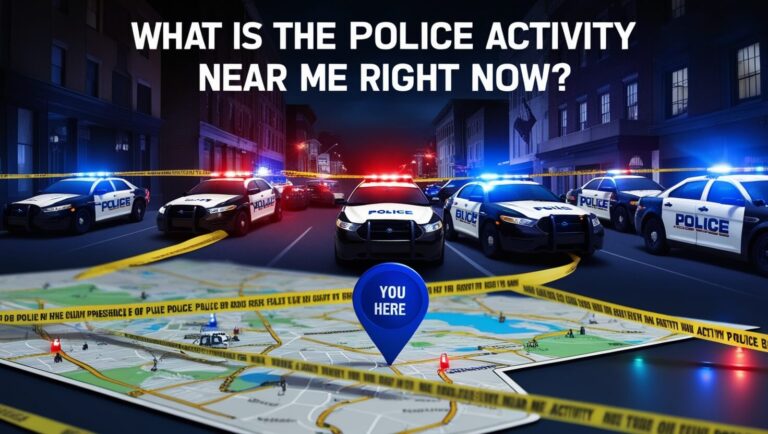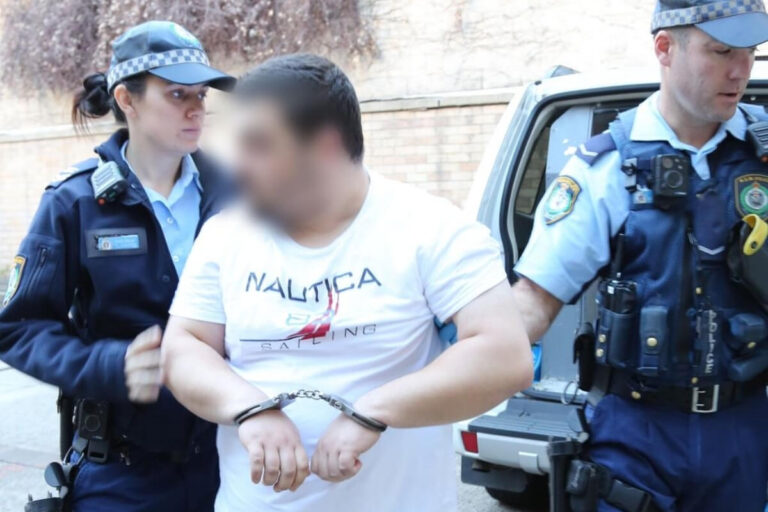How Many Police Officers Rwanda? Statistics 2025
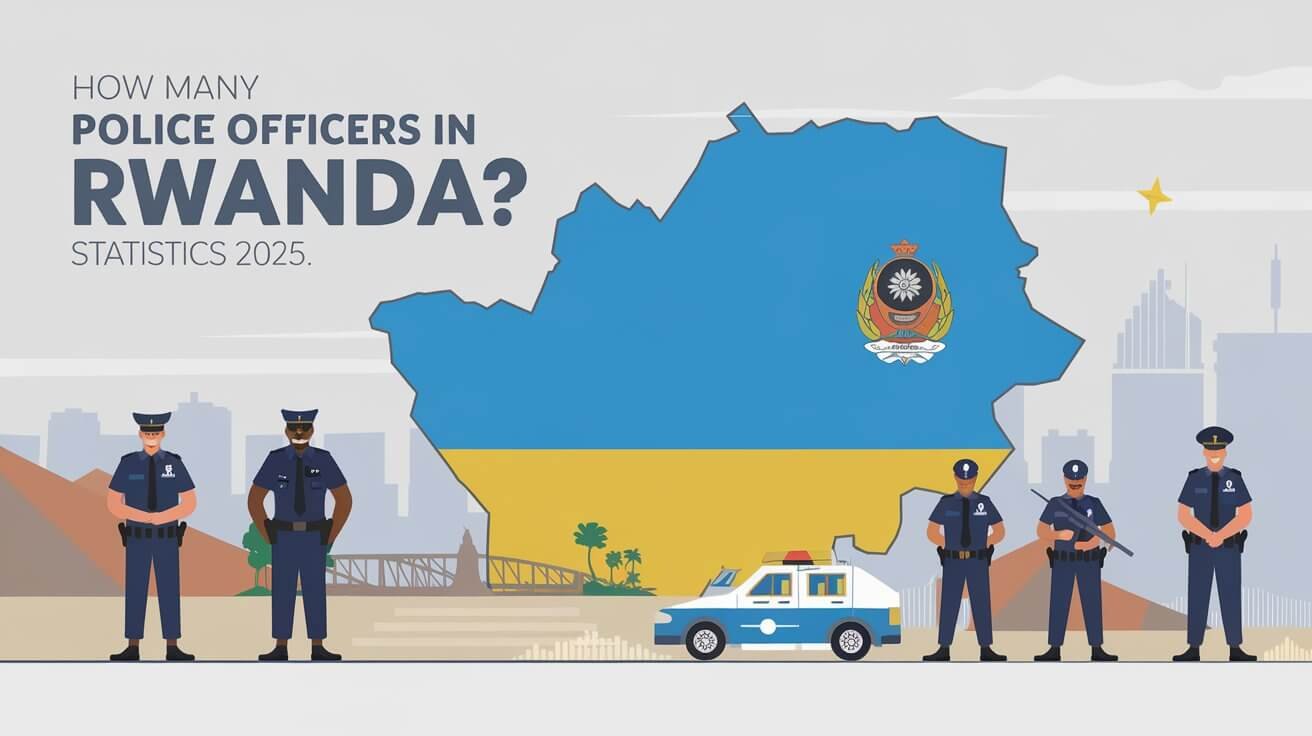
The Rwanda National Police has seen big changes. 155 officers, including two Commissioners of Police, retired. At the same time, 2,256 new junior officers joined, with 1,777 men and 479 women. They went through nine months of training.
It’s important to know the Police Force Statistics. This helps us see if the Rwanda National Police is doing a good job. They keep us safe and secure.
The Rwanda National Police is growing and changing. Over the last 30 years, they’ve focused on security and development. They deal with big issues like alcohol abuse, theft, and road accidents.
Looking at the Police Force Statistics helps us understand their strengths and weaknesses. This way, we can see how they can improve.
Current Police Force Statistics in Rwanda
Rwanda’s police force is growing and changing. Recently, four officers were promoted to Assistant Commissioner of Police. This shows the force’s commitment to growth and development. The police are spread across the country, focusing on building trust with local communities through Community Policing.
The exact number of active officers in Rwanda is not shared publicly. Yet, the force aims to better match the number of officers to the population. With a population of about 13.5 million, the challenge is significant. But, efforts in Community Policing are helping to meet this challenge.
Total Active Officers
The police force in Rwanda is working to grow and become more effective. They are focusing on improving how officers are distributed and boosting Community Policing efforts.
Officer-to-Population Ratio
The ratio of officers to the population is key to Rwanda’s security. With a growing population and a focus on Community Policing, the police aim to improve this ratio. They want to ensure all communities have enough policing services.
Gender Distribution
The gender balance in the police force is important for its diversity and effectiveness. Rwanda’s police are working to increase gender equality. They aim to give all officers, regardless of gender, equal chances for advancement and development.
| Category | Statistic |
|---|---|
| Population of Rwanda (2021) | 13.5 million |
| Population Growth Rate (2021) | 2.4% |
| Human Development Index (HDI) Score (2021) | 0.534 |
Rwanda National Police Force Structure
The Rwanda National Police force is a result of merging the Gendarmerie Nationale, Communal Police, and Judicial Police. This created a unified and efficient law enforcement body. The structure has allowed the Police Force to operate well and make informed decisions.
The Rwanda National Police has grown a lot, focusing on improving its strength and promoting democratic values. It works hard to follow the rule of law and protect human rights.
The Police Force has received training and capacity-building programs. For example, 20 senior police officers attended a 4-day Logical Framework Analysis workshop. This workshop helped identify key areas for improvement, like better criminal investigations and community policing.
The cooperation with the Swedish National Police Board has been key. It has helped strengthen the force and promote democratic policing.
Some important areas for the Rwanda National Police include:
- Community Policing: building strong relationships with the community and ensuring public safety
- Institutional Accountability: making sure the force is transparent and accountable
- Management Development: improving the skills of police officers and leaders
- Training: providing ongoing training for police officers
The Rwanda National Police has made big strides in tackling security challenges. It has focused on issues like human trafficking, wildlife trafficking, and cybercrimes. The force also works hard to protect vulnerable groups, such as genocide survivors, girls, and witnesses of crime.
With its structured approach and commitment to democratic values, the Rwanda National Police is ready to keep law and order. It aims to ensure public safety in Rwanda.
| Area of Focus | Initiatives | Partners |
|---|---|---|
| Community Policing | Community Policing Committees, Local Leaders | Swedish National Police Board, Civil Society Organizations |
| Institutional Accountability | Institutional Accountability Mechanisms | Swedish International Development Cooperation Agency (Sida) |
| Management Development | Leadership Training, Capacity Building | Swedish National Police Board, Rwanda National Police |
Historical Growth of Rwanda’s Police Force
Rwanda’s police force has changed a lot, starting after the Rwanda Genocide. The history shows efforts to rebuild and create a strong force for the nation. The genocide had a big impact, leading to big changes in the police.
After the genocide, rebuilding the police was key. This included adding new officers and promoting others, as seen in the 16th Basic Police Course intake. The growth of Rwanda’s police shows the need to control ethnic issues and centralize power.
Key Developments
- The concentration of power in Rwanda’s history has been connected to the military framework of the country, allowing for social mobility and unification.
- The Rwandan Patriotic Front (RPF) led by Paul Kagame took power after a conflict that lasted four years, resulting in the central role of the military elite in ruling the country.
- The RPF regime implemented civic reeducation and indoctrination camps, known as Ingando, targeting thousands of prisoners accused of genocidal crimes.
The history of Rwanda’s police is complex, shaped by the country’s past. Knowing this history helps us understand the police’s role today in keeping Rwanda safe.
Regional Distribution of Police Officers
The number of police officers in Rwanda varies by region. This is due to population density and security needs. Knowing where police are helps us see if they are doing a good job and where they might be needed more.
Rwanda National Police manages police distribution across the country. They aim to keep everyone safe. The police are split into areas, each facing its own challenges. They focus on making sure every area gets enough police.
Several things affect where police are stationed:
- Population density: Places with lots of people need more police to keep things calm.
- Security needs: Areas with more crime or danger need more officers for safety.
- Geography: Places that are hard to get to might need special police help.
The Rwanda National Police works hard to make sure every area gets the police it needs. They use what they know about police distribution to plan better. This way, they can make sure everyone is safe.
| Region | Population Density | Security Needs | Police Distribution |
|---|---|---|---|
| Kigali | High | High | 1000 officers |
| Eastern Province | Medium | Medium | 500 officers |
| Western Province | Low | Low | 200 officers |
Police Training Programs in Rwanda
Police training is key in law enforcement, and Rwanda is making big steps. The Rwanda National Police (RNP) has set up many training programs. These programs help officers learn the skills they need to do their jobs well.
The RNP’s training includes basic courses, specialized units, and partnerships with other countries. The basic training gives a solid start in law enforcement. Specialized units offer more in-depth training. Training with other countries helps officers learn from the best worldwide.
Basic Training Requirements
The basic training lasts nine months. It covers important topics like law enforcement, human rights, and community policing. This training prepares new officers for their duties.
Recently, 2,072 new members joined, with 1,998 becoming police officers and 74 prison wardens. They all went through this training.
Specialized Units and International Training Partnerships
The RNP has created special units for challenges like counter-terrorism and cybercrime. They also work with countries like the United States, the United Kingdom, and France. This partnership brings advanced training and equipment to Rwanda.
| Training Program | Duration | Number of Officers |
|---|---|---|
| Basic Training | 9 months | 1,930 |
| Specialized Units | Varies | 142 |
| International Training Partnerships | Varies | 33 |
These training programs are vital for police professionalism. They make sure officers are ready for their duties. The RNP’s dedication to training is clear at the 16th Basic Police Course pass-out ceremony.
How Many Police Officers Rwanda Maintains Per District
Rwanda decides how many police officers each district gets based on its security needs and population. This way, every part of the country gets enough police. It helps keep the country safe.
The Presidential Order 30 of 2012 guides police recruitment. It uses a Police to Population ratio to figure out how many officers each district needs. This ratio helps ensure each district is secure. Other factors like crime rates and population density also play a role.
| District | Population | Number of Police Officers |
|---|---|---|
| Kigali | 1,135,000 | 2,500 |
| Eastern Province | 2,600,000 | 4,000 |
| Western Province | 2,470,000 | 3,500 |
The table shows how many police officers each district in Rwanda has. It’s based on the district’s population and security needs. The number of police can change over time due to security and population changes.
Community Policing Initiatives
The Rwanda National Police has started many community policing projects. These projects aim to make everyone feel safe and work together. They help build trust and teamwork between the police and the public.
Community policing is key for the police. It lets them team up with the community to stop and solve crimes. This includes neighborhood watch groups and partnerships for public safety.
Neighborhood Watch Programs
Neighborhood watch groups are a big part of community policing. They join community members with the police to stop and report crimes. With over 74,000 members in Community Policing Committees (CPCs) in Rwanda, these groups have helped a lot.
Public Safety Partnerships
Public safety partnerships are also very important. They bring together the police, community members, and others to tackle safety issues. Some examples include:
- Over 500,000 members of Rwanda Youth Volunteers in Community Policing
- Over 2,500 anti-crime clubs trained periodically
- More than 16,000 mosquito nets given to needy families
- Over 8,500 medical insurance given to needy families
These efforts have really helped make Rwanda safer. By working together, the police and community can stop and solve crimes. This builds trust and teamwork.
| Initiative | Number of Beneficiaries |
|---|---|
| Community Policing Committees (CPCs) | Over 74,000 |
| Rwanda Youth Volunteers in Community Policing | Over 500,000 |
| Anti-crime clubs | Over 2,500 |
Technology Integration in Rwanda’s Police Force
Rwanda’s police force has made big steps in using technology to improve policing. This has made their services more efficient and effective. For example, they hosted the first Police Command Post Exercise (PCPX) in August.
This event used Interpol’s I-24/7 tool to connect police from 190 countries. This shows how technology helps in working together.
Technology has also helped in fighting crime and improving communication. It has made police work faster and more efficient. It also helps in keeping the community safe and involved.
The Rwandan government supports the use of technology in policing. They have helped a lot in this area. They have also made big progress in using technology in the justice system.
Over 85% of court filings are now digital. This is thanks to the Integrated Electronic Case Management System (IECMS).
| Category | Benefit |
|---|---|
| Crime Prevention | Improved intelligence gathering and analysis |
| Investigation | Enhanced forensic capabilities and evidence management |
| Community Engagement | Increased public awareness and participation in policing initiatives |
Police Force Budget and Resources
The police force’s budget and how it uses its resources are key to its success. In Rwanda, the police budget for 2023 is about $150 million. This money helps fund the police’s work, like training, buying equipment, and paying officers.
The way the government spends its money shows its focus on keeping people safe. The police budget is a big part of keeping the community safe. It helps the police do their job well and keeps trust with the public.
The police budget covers many things, including:
- Training and development programs for police officers
- Equipment and resource procurement
- Personnel costs, including salaries and benefits
Rwanda spends about $10 million a year on police training. This money is vital for making the police better and more professional. The police budget is checked often to make sure it matches the government’s goals for safety and law enforcement.
Comparative Analysis with East African Nations
Rwanda’s police force can learn a lot by comparing itself to other East African nations. Looking at what works well and what doesn’t helps Rwanda improve. This way, Rwanda can adopt the best practices and tackle its weaknesses in law enforcement.
Some key areas to compare include:
- Crime rates and types, such as human trafficking and cybercrimes
- Police training programs and community policing initiatives
- Technology integration and equipment distribution
- Collaboration and cooperation between law enforcement agencies
Comparing with others can also show Rwanda new ideas and challenges in law enforcement. For instance, Tanzania’s use of restorative justice and Kenya’s community policing are worth looking at. These could inspire Rwanda’s police force.
By doing a comparative analysis, Rwanda can help improve regional security. This can make the country safer for its citizens and contribute to East Africa’s overall safety.
| Country | Crime Rate | Police Training Programs |
|---|---|---|
| Rwanda | Low | Basic training and specialized units |
| Tanzania | Medium | Community policing and restorative justice |
| Kenya | High | Community policing and technology integration |
Future Expansion Plans
The Rwanda National Police has big plans for the future. They want to grow and improve their services. This includes hiring more officers and building better facilities.
They aim to serve the public better and help the country grow. This is part of their strategy to become a stronger force. They want to meet the community’s changing needs.
Recruitment Goals
The police have set goals to recruit more officers. They want a more diverse and skilled team. This will help them serve the public better.
Infrastructure Development
Building better facilities is also a key part of their plan. They will construct new buildings and upgrade old ones. They also plan to get the latest technology and equipment.
These plans will help the police play a bigger role in keeping the country safe. The future looks bright for the Rwanda National Police. They are ready to make a positive impact on the nation.
Last Thoughts
The Rwanda National Police is key to keeping the country safe. It has grown a lot over time, adapting to the needs of its people. The police offer strong training, use new tech, and work closely with the community.
This shows their dedication to keeping everyone safe. Rwanda’s police force is getting better, thanks to smart planning and teamwork. This helps Rwanda grow and stay safe for all its people.
Rwanda is serious about having a strong police force. They use data and work with others to solve problems. This shows Rwanda’s commitment to safety and good leadership.
Knowing how important the police are helps us see Rwanda’s efforts. Both locals and outsiders can see how much Rwanda cares about safety and fair rules.
Answered Queries
What is the current total number of active police officers in Rwanda?
The article gives detailed stats on Rwanda’s active police officers. It covers the officer-to-population ratio and gender breakdown in the force.
How is the Rwanda National Police organized and structured?
The article explains the Rwanda National Police’s structure. It talks about its command, departments, and specialized units.
What is the historical background and growth of the Rwanda National Police force?
The article looks at the Rwanda National Police’s history. It covers its formation after the genocide and its growth into a unified force.
How is the distribution of police officers across Rwanda’s regions and districts determined?
The article discusses how police officers are spread across Rwanda. It talks about the factors in this process and its impact on safety.
What training programs are available for police officers in Rwanda?
The article details the training for Rwanda’s police officers. It covers basic training, specialized units, and international partnerships.
What community policing initiatives are undertaken by the Rwanda National Police?
The article talks about the Rwanda National Police’s community efforts. It mentions neighborhood watch programs and public safety partnerships.
How is technology integrated within the Rwanda National Police force?
The article explains how technology is used in the Rwanda National Police. It shows how it improves services and security.
What is the budget and resource allocation for the Rwanda National Police?
The article discusses the Rwanda National Police’s budget and resources. It covers annual allocations and equipment distribution.
How does the Rwanda National Police compare to other police forces in East Africa?
The article compares the Rwanda National Police to other East African forces. It looks at strengths, weaknesses, and collaboration opportunities.
What are the future expansion plans for the Rwanda National Police?
The article talks about the Rwanda National Police’s future plans. It includes recruitment goals, infrastructure, and service enhancements.


